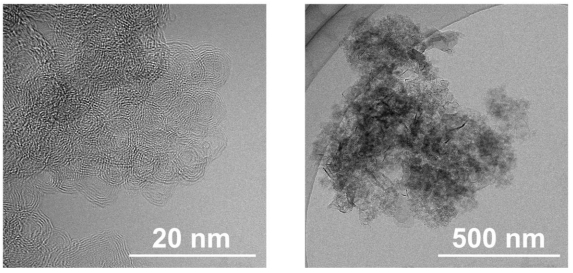
Despite the recent attention for Li metal anode (LMA) with high theoretical specific capacity of ≈3860 mA h g−1, it suffers from not enough practical energy densities and safety concerns originating from the excessive metal load, which is essential to compensate for the loss of Li sources resulting from their poor coulombic efficiencies (CEs). Therefore, the development of high-performance LMA is needed to realize anode-minimized Li metal batteries (LMBs). In this study, high-performance LMAs are produced by introducing a hierarchically nanoporous assembly (HNA) composed of functionalized onion-like graphitic carbon building blocks, several nanometers in diameter, as a catalytic scaffold for Li-metal storage. The HNA-based electrodes lead to a high Li ion concentration in the nanoporous structure, showing a high CE of ≈99.1%, high rate capability of 12 mA cm−2, and a stable cycling behavior of more than 750 cycles. In addition, anode-minimized LMBs are achieved using a HNA that has limited Li content (≈0.13 mg cm−2), corresponding to 6.5% of the cathode material (commercial NCM622 (≈2 mg cm−2)). The LMBs demonstrate a feasible electrochemical performance with high energy and power densities of ≈510 Wh kgelectrode−1 and ≈2760 W kgelectrode−1, respectively, for more than 100 cycles.
